Introduction
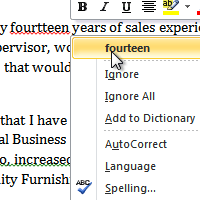
Checking spelling and grammar
Video: Spelling and Grammar in Word 2010
Optional: You can download this example for extra practice.
To run a spelling and grammar check:
- Go to the Review tab.
- Click on the Spelling & Grammar command.
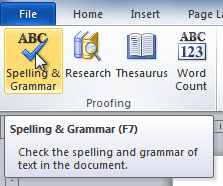
- The Spelling and Grammar dialog box will open. For each error in your document, Word will try to offer one or more suggestions. You can select a suggestion and click Change to correct the error.
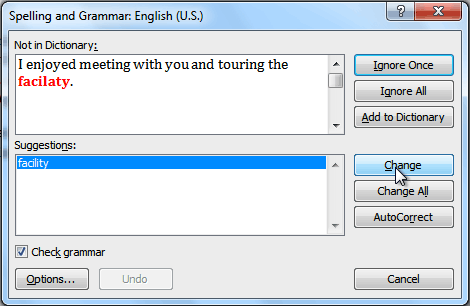
- If no suggestions are given, you can manually type the correct spelling.
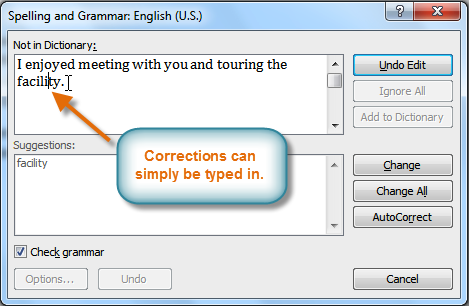
Ignoring "errors"
The spelling and grammar check is not always correct. Particularly with grammar, there are many errors Word will not notice. There are also times when the spelling and grammar check will say something's an error when it's actually not. This often happens with people's names, which may not be in the dictionary.If Word says something is an error, you can choose not to change it. Depending on whether it's a spelling or grammar error, you can choose from several options:
For spelling "errors"
- Ignore Once: This will skip the word without changing it.
- Ignore All: This will skip the word without changing it, and it will also skip all other instances of this word in the document.
- Add to Dictionary: This adds the word to the dictionary so it will never come up as an error. Make sure the word is spelled correctly before choosing this option.
For grammar "errors"
- Ignore Once: This will skip the "error" without changing it.
- Ignore Rule: This will skip this "error" and all other instances that relate to this grammar rule.
- Next Sentence: This skips the sentence without changing it and leaves it marked as an error. This means it will still show up if you do another spelling and grammar check later on.
If you're not sure about a grammar error, you can click Explain to see why Word thinks it's an error. This can help you determine whether you want to change it.
Automatic spelling and grammar checking
By default, Word automatically checks your document for spelling and grammar errors, so you may not even need to run a separate spelling and grammar check. These errors are indicated by colored wavy lines.- The red line indicates a misspelled word.
- The green line indicates a grammatical error.
- The blue line indicates a contextual spelling error. This feature is turned off by default.
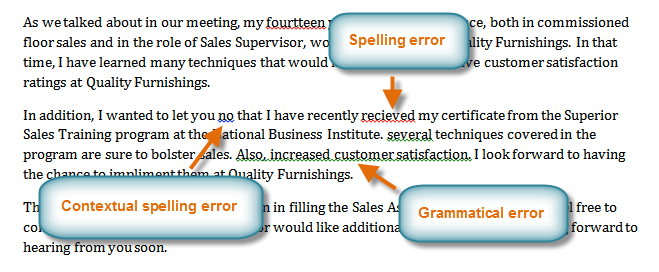
A contextual spelling error occurs when the wrong word is used but the word is spelled correctly. For example, if you write Deer Mr. Theodore at the beginning of a letter, deer is a contextual spelling error because dear should have been used. Deer is spelled correctly, but it is used incorrectly in this letter.
To use the spelling check feature:
- Right-click the underlined word. A menu will appear.
- Click the correct spelling of the word from the listed suggestions.
- The corrected word will appear in the document.
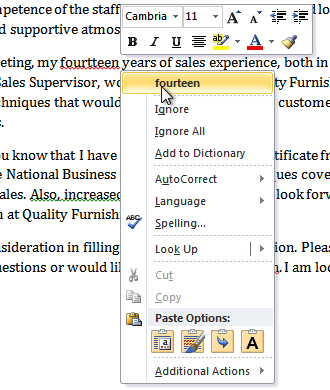
You can choose to Ignore an underlined word, add it to the dictionary, or go to the Spelling dialog box for more options.
To use the grammar check feature:
- Right-click the underlined word or phrase. A menu will appear.
- Click the correct phrase from the listed suggestions.
- The corrected phrase will appear in the document.
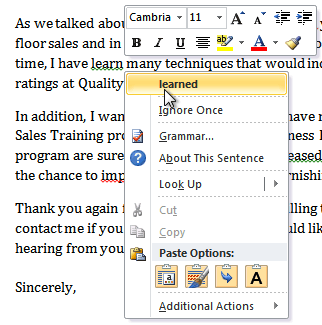
You can also choose to Ignore an underlined phrase, go to the Grammar dialog box, or click About This Sentence for information on the grammar rule.
To change the automatic spelling and grammar check settings:
- From Backstage view, click Options.
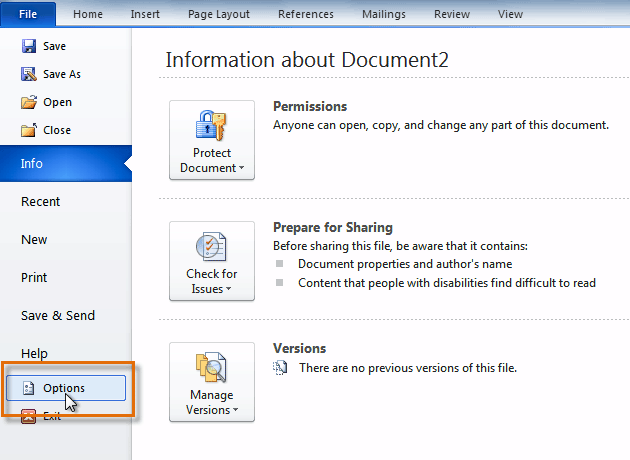
- Select Proofing. The dialog box gives you several options to choose from.
- If you don't want Word to automatically check spelling, uncheck Check spelling as you type.
- If you don't want grammar errors to be marked, uncheck Mark grammar errors as you type.
- To check for contextual spelling errors, check Use contextual spelling.
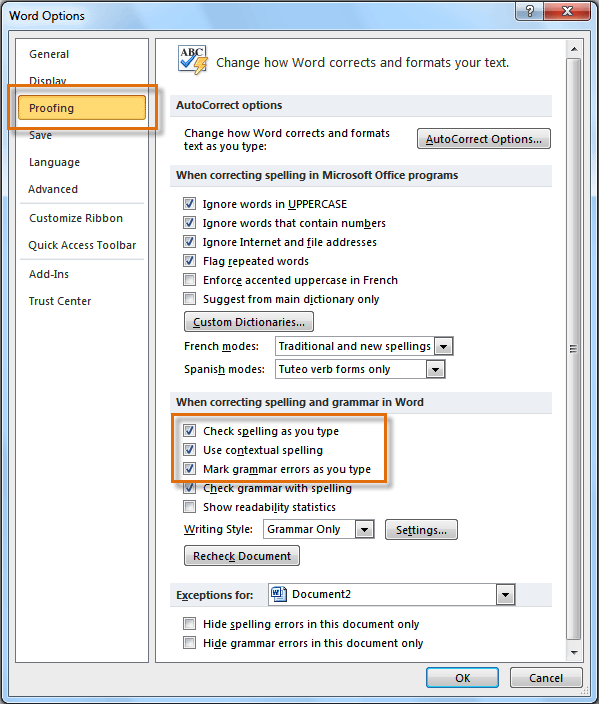
If you've turned off the automatic spelling and/or grammar checks, you can still run a check by going to the Review tab and clicking the Spelling & Grammar button.
To hide spelling and grammar errors in a document:
If you're sharing a document like a resume with someone, you might not want that person to see those annoying red, green, and blue lines. Turning off the automatic spelling and grammar checks only applies to your computer, so the lines may still show up when someone else views your document. Luckily, you can hide spelling and grammar errors in a document so the lines will not show up on any computer.- From Backstage view, click Options.
- Select Proofing.
- In the drop-down box next to "Exceptions for:" select the correct document (if you have more than one document open).
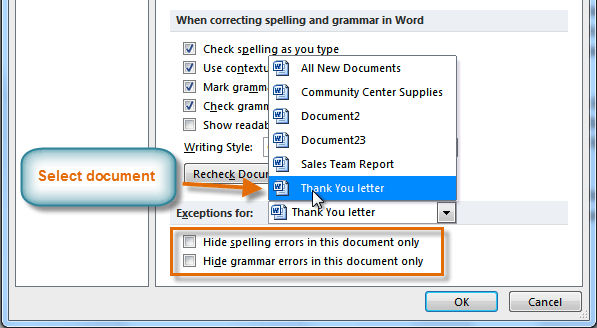
- Put a check mark next to Hide spelling errors in this document only and Hide grammar errors in this document only.
- Click OK.
Challenge!
- Open an existing Word document. If you want, you can use this example.
- Correct the spelling errors.
- Correct the grammar errors.













0 comments:
Post a Comment